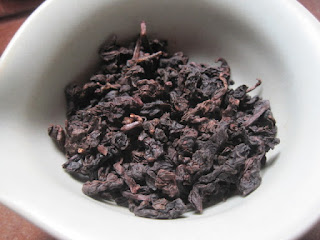But good tea- fresh or intentionally-aged, whole-leaved, non-pulverized, unbagged, tasty, interesting- good tea has been hard to come by.
(I took this photo at the Cooke City Store this summer. The proprietor of this 1886 general merchandise joint that sits sandwiched at 7600 feet between the Beartooth and Absoroka Ranges said that these tea bins were original to the store. I wonder if that oolong tasted like horse turds. And what was contained in the bin simply labeled "Japan''?)
 |
| I like to think of these guys drinking roasted tieguanyin grandpa style, filtering the leaves out with their remaining teeth. |
There's a new teashop in Missoula, Lake Missoula Tea Company, and I have hopes that this budding business will come into its own and thrive. I went to a green tea tasting there last weekend. There was a watery Liu An Gua Pian and a smokey Vietnamese green both served out of a pump carafe into paper cups. One of the store owners kindly gave me a porcelain cup after they had washed some. We also drank some kind of jasmine pearl that was nicely brewed- boy, it has been ages since I had a cup of jasmine tea. Not my favorite, but fine. There was also a matcha that did not work out very well- gummy, harsh, no froth. I would not try and serve matcha to a crowd, but I respect that the attempt was made. It's hard to brew tea for a group of people, especially green tea. I wouldn't know how to do it without an army of gaiwans.
The owners seem like very nice, humble people who are genuinely interested in tea. I brought home a bit of super-oxidised oolong grown by a Taiwanese family in Sumatra. It's not bad, a lot like a mid-grade Dong Fang Mei Ren but rolled into pellets of broken leaf. Lake Missoula Tea has a connection with a Kenyan grower's collective and some of the black tea they are selling looks very nice, furry and golden. We'll have to give that a shot and see if we can't start saving on Dian Hong shipping costs.
*I filched the photo of the Cooke City residents from the C.C. Chamber of Commerce site.















































